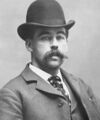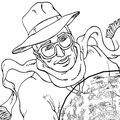Template:Selected anniversaries/May 7: Difference between revisions
No edit summary |
No edit summary |
||
| Line 1: | Line 1: | ||
<gallery> | <gallery> | ||
||1617 | ||1617: David Fabricius dies ... astronomer and theologian. | ||
||1700 | ||1700: Gerard van Swieten born ... physician ... Vampires | ||
File:Antoine Lavoisier.jpg|link=Antoine Lavoisier (nonfiction)|1794: Chemist, aristocrat, and crime-fighter [[Antoine Lavoisier (nonfiction)|Antoine Lavoisier]] publishes his groundbreaking treatise on [[crimes against chemical constants]], introducing nomenclature and terminology used to this day. | File:Antoine Lavoisier.jpg|link=Antoine Lavoisier (nonfiction)|1794: Chemist, aristocrat, and crime-fighter [[Antoine Lavoisier (nonfiction)|Antoine Lavoisier]] publishes his groundbreaking treatise on [[crimes against chemical constants]], introducing nomenclature and terminology used to this day. | ||
| Line 8: | Line 8: | ||
File:Supplice de 9 émigrés Octobre 1793.jpg|link=French Revolution (nonfiction)|1794: [[French Revolution (nonfiction)|French Revolution]]: Robespierre introduces the Cult of the Supreme Being in the National Convention as the new state religion of the French First Republic. | File:Supplice de 9 émigrés Octobre 1793.jpg|link=French Revolution (nonfiction)|1794: [[French Revolution (nonfiction)|French Revolution]]: Robespierre introduces the Cult of the Supreme Being in the National Convention as the new state religion of the French First Republic. | ||
||Otto Wilhelm von Struve | ||1819: Otto Wilhelm von Struve born ... astronomer. Together with his father, Friedrich Georg Wilhelm von Struve, Otto Wilhelm von Struve is considered a prominent 19th century astronomer who headed the Pulkovo Observatory between 1862 and 1889 and was a leading member of the Russian Academy of Sciences. Pic. | ||
||Joseph Thomas Clover | ||1825: Joseph Thomas Clover baptized ... doctor and pioneer of anaesthesia. He invented a variety of pieces of apparatus to deliver anaesthetics including ether and chloroform safely and controllably. By 1871 he had administered anaesthetics 13,000 times without a fatality. | ||
File:Carl Gottfried Neumann.jpg|link=Carl Gottfried Neumann (nonfiction)|1832: Mathematician [[Carl Gottfried Neumann (nonfiction)|Carl Gottfried Neumann]] born. He will study physics with his father, and later work as a mathematician, dealing almost exclusively with problems arising from physics. | File:Carl Gottfried Neumann.jpg|link=Carl Gottfried Neumann (nonfiction)|1832: Mathematician [[Carl Gottfried Neumann (nonfiction)|Carl Gottfried Neumann]] born. He will study physics with his father, and later work as a mathematician, dealing almost exclusively with problems arising from physics. | ||
||Pietro Abbati Marescotti | ||1842: Pietro Abbati Marescotti dies ... mathematician. No pic, none. | ||
||Carl Gustav Axel von Harnack | ||1851: Carl Gustav Axel von Harnack born ... mathematician who contributed to potential theory. Harnack's inequality applied to harmonic functions. He also worked on the real algebraic geometry of plane curves, proving Harnack's curve theorem for real plane algebraic curves. | ||
||Giuseppe Veronese | ||1854: Giuseppe Veronese dies ... mathematician. | ||
File:Oliver Blackburn Shallenberger.jpg|link=Oliver B. Shallenberger (nonfiction)|1860: Electrical engineer and inventor [[Oliver B. Shallenberger (nonfiction)|Oliver Blackburn Shallenberger]] born. He will invent the first successful alternating current electrical meter, which will be critical to the general acceptance of AC power. | File:Oliver Blackburn Shallenberger.jpg|link=Oliver B. Shallenberger (nonfiction)|1860: Electrical engineer and inventor [[Oliver B. Shallenberger (nonfiction)|Oliver Blackburn Shallenberger]] born. He will invent the first successful alternating current electrical meter, which will be critical to the general acceptance of AC power. | ||
| | ||1880: Oskar Perron born ... mathematician. He made numerous contributions to differential equations and partial differential equations, including the Perron method to solve the Dirichlet problem for elliptic partial differential equations. Pic. | ||
||1890: James Nasmyth dies ... engineer who invented the steam-hammer (24 Nov 1839) which was patented in Britain on 9 Jun 1842 (No. 9382). In his early career, Nasmyth improved the design of machine tools. Power hammers had previously been driven by steam, but Nasmyth designed his steam-hammer with more precision and control. The steam functioned to lift the hammer which then dropped by gravity, and repeated the cycle. Nasmyth adapted the idea to make a steam pile-driver. With later improvements, the steam-hammer enabled forging very large guns for the British navy. He became wealthy and in 1856 was able to retire at the age of 48. After retirement, Nasmyth pursued his hobby of astronomy, in which he published minor works. Pic. | ||1890: James Nasmyth dies ... engineer who invented the steam-hammer (24 Nov 1839) which was patented in Britain on 9 Jun 1842 (No. 9382). In his early career, Nasmyth improved the design of machine tools. Power hammers had previously been driven by steam, but Nasmyth designed his steam-hammer with more precision and control. The steam functioned to lift the hammer which then dropped by gravity, and repeated the cycle. Nasmyth adapted the idea to make a steam pile-driver. With later improvements, the steam-hammer enabled forging very large guns for the British navy. He became wealthy and in 1856 was able to retire at the age of 48. After retirement, Nasmyth pursued his hobby of astronomy, in which he published minor works. Pic. | ||
| Line 36: | Line 32: | ||
File:The Time Machine by H.G. Wells (1895).jpg|link=Time machine (nonfiction)|1895: First publication of ''[[Time machine (nonfiction)|The Time Machine]]'' by H. G. Wells. | File:The Time Machine by H.G. Wells (1895).jpg|link=Time machine (nonfiction)|1895: First publication of ''[[Time machine (nonfiction)|The Time Machine]]'' by H. G. Wells. | ||
||Pavel Sergeyevich Alexandrov | ||1896: Pavel Sergeyevich Alexandrov born ... Soviet mathematician. He wrote about three hundred papers, making important contributions to set theory and topology. | ||
File:H. H. Holmes.jpg|link=H. H. Holmes (nonfiction)|1896: Serial killer [[H. H. Holmes (nonfiction)|H. H. Holmes]] is executed for the murder of his friend and accomplice Benjamin Pitezel. | File:H. H. Holmes.jpg|link=H. H. Holmes (nonfiction)|1896: Serial killer [[H. H. Holmes (nonfiction)|H. H. Holmes]] is executed for the murder of his friend and accomplice Benjamin Pitezel. | ||
||Theodor Schneider | ||1911: Theodor Schneider born ... mathematician, best known for providing proof of what is now known as the Gelfond–Schneider theorem. Schneider studied from 1929 to 34 in Frankfurt; he solved Hilbert's 7th problem in his PhD thesis, which then came to be known as the Gelfond–Schneider theorem. | ||
||1913 | ||1913: Simon Ramo born ... physicist and engineer. | ||
||1915 | ||1915: World War I: German submarine U-20 sinks RMS Lusitania, killing 1,198 people, including 128 Americans. Public reaction to the sinking turns many formerly pro-Germans in the United States against the German Empire | ||
||1925 | ||1925: Lauri Vaska born ... chemist and academic. | ||
||1928 | ||1928: The Jinan incident begins with Japanese forces killing the Chinese negotiating team in Jinan, China, and going on to kill over 2,000 Chinese civilians in the following days. | ||
||1952 | ||1952: The concept of the integrated circuit, the basis for all modern computers, is first published by Geoffrey Dummer. | ||
File:Egon Rhodomunde.jpg|link=Egon Rhodomunde|1960: Film director and arms dealer [[Egon Rhodomunde]] raises funds for new film about the American U-2 pilot [[Francis Gary Powers (nonfiction)|Gary Powers]]. | File:Egon Rhodomunde.jpg|link=Egon Rhodomunde|1960: Film director and arms dealer [[Egon Rhodomunde]] raises funds for new film about the American U-2 pilot [[Francis Gary Powers (nonfiction)|Gary Powers]]. | ||
| Line 58: | Line 54: | ||
File:Dard Hunter, Glyph Warden detail.jpg|link=Niles Cartouchian (1900s)|1960: Actor-cryptographer [[Niles Cartouchian (1900s)|Niles Cartouchian]] meets privately with Nikita Khrushchev and [[Francis Gary Powers (nonfiction)|Gary Powers]] in a successful attempt to avoid nuclear war. | File:Dard Hunter, Glyph Warden detail.jpg|link=Niles Cartouchian (1900s)|1960: Actor-cryptographer [[Niles Cartouchian (1900s)|Niles Cartouchian]] meets privately with Nikita Khrushchev and [[Francis Gary Powers (nonfiction)|Gary Powers]] in a successful attempt to avoid nuclear war. | ||
||Hermann Lorenz Künneth | ||1975: Hermann Lorenz Künneth dies ... mathematician and renowned algebraic topologist, best known for his contribution to what is now known as the Künneth theorem. | ||
|| | ||1992: The Space Shuttle Endeavour is launched on its first mission, STS-49. | ||
|| | ||1994: Edvard Munch's iconic painting ''The Scream'' is recovered undamaged after being stolen from the National Gallery of Norway in February. | ||
|| | ||2011: Willard Boyle dies ... physicist and academic, Nobel Prize laureate. | ||
|| | ||2014: Colin Pillinger dies ... astronomer, chemist, and academic. | ||
|| | ||2015: Samuel Frederick Edwards dies ... physicist. Pic. | ||
||2017: Elon Lages Lima dies ... mathematician whose research concerned differential topology, algebraic topology, and differential geometry. Lima was an influential figure in the development of mathematics in Brazil. | |||
</gallery> | </gallery> | ||
Revision as of 20:54, 21 August 2018
1794: Chemist, aristocrat, and crime-fighter Antoine Lavoisier publishes his groundbreaking treatise on crimes against chemical constants, introducing nomenclature and terminology used to this day.
1794: French Revolution: Robespierre introduces the Cult of the Supreme Being in the National Convention as the new state religion of the French First Republic.
1832: Mathematician Carl Gottfried Neumann born. He will study physics with his father, and later work as a mathematician, dealing almost exclusively with problems arising from physics.
1860: Electrical engineer and inventor Oliver Blackburn Shallenberger born. He will invent the first successful alternating current electrical meter, which will be critical to the general acceptance of AC power.
1895: Russian physicist Alexander Stepanovich Popov demonstrates to the Russian Physical and Chemical Society his invention, the Popov lightning detector — a primitive radio receiver.
1895: Mathematician and alleged immortal John Havelock purchases signed first edition of The Time Machine, telling author H. G. Wells that the book "is an instant classic."
1895: First publication of The Time Machine by H. G. Wells.
1896: Serial killer H. H. Holmes is executed for the murder of his friend and accomplice Benjamin Pitezel.
1960: Film director and arms dealer Egon Rhodomunde raises funds for new film about the American U-2 pilot Gary Powers.
1960: Cold War: U-2 Crisis of 1960: Soviet leader Nikita Khrushchev announces that his nation is holding American U-2 pilot Gary Powers.
1960: Actor-cryptographer Niles Cartouchian meets privately with Nikita Khrushchev and Gary Powers in a successful attempt to avoid nuclear war.










